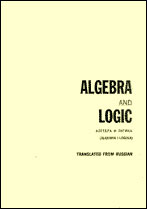|
This article is cited in 3 scientific papers (total in 3 papers)
Pronormality and strong pronormality of subgroups
E. P. Vdovinab, D. O. Revinba
a Sobolev Institute of Mathematics, Siberian Branch of the Russian Academy of Sciences, Novosibirsk, Russia
b Novosibirsk State University, Novosibirsk, Russia
Abstract:
A subgroup $H$ of a group $G$ is said to be pronormal if, for any element $g\in G$, subgroups $H$ and $H^g$ are conjugate in $\langle H,H^g\rangle$. A subgroup $H$ of a group $G$ is said to be strongly pronormal if, for any subgroup $K\le H$ and any element $g\in G$, there exists an element $x\in\langle H,K^g\rangle$ such that $K^{gx}\le H$. Many known examples of pronormal subgroups, namely, normal subgroups, maximal subgroups, Sylow subgroups of finite groups, and Hall subgroups of finite soluble groups, will also exemplify strongly pronormal subgroups. It is shown that Carter subgroups of finite groups (which are always pronormal) are not strongly pronormal in general, even in soluble groups.
Keywords:
pronormal group, strongly pronormal group, Carter subgroup, finite group.
Received: 01.08.2012
Citation:
E. P. Vdovin, D. O. Revin, “Pronormality and strong pronormality of subgroups”, Algebra Logika, 52:1 (2013), 22–33; Algebra and Logic, 52:1 (2013), 15–23
Linking options:
https://www.mathnet.ru/eng/al569 https://www.mathnet.ru/eng/al/v52/i1/p22
|


| Statistics & downloads: |
| Abstract page: | 386 | | Full-text PDF : | 107 | | References: | 48 | | First page: | 10 |
|





 Contact us:
Contact us: Terms of Use
Terms of Use
 Registration to the website
Registration to the website Logotypes
Logotypes








 Citation in format
Citation in format 
